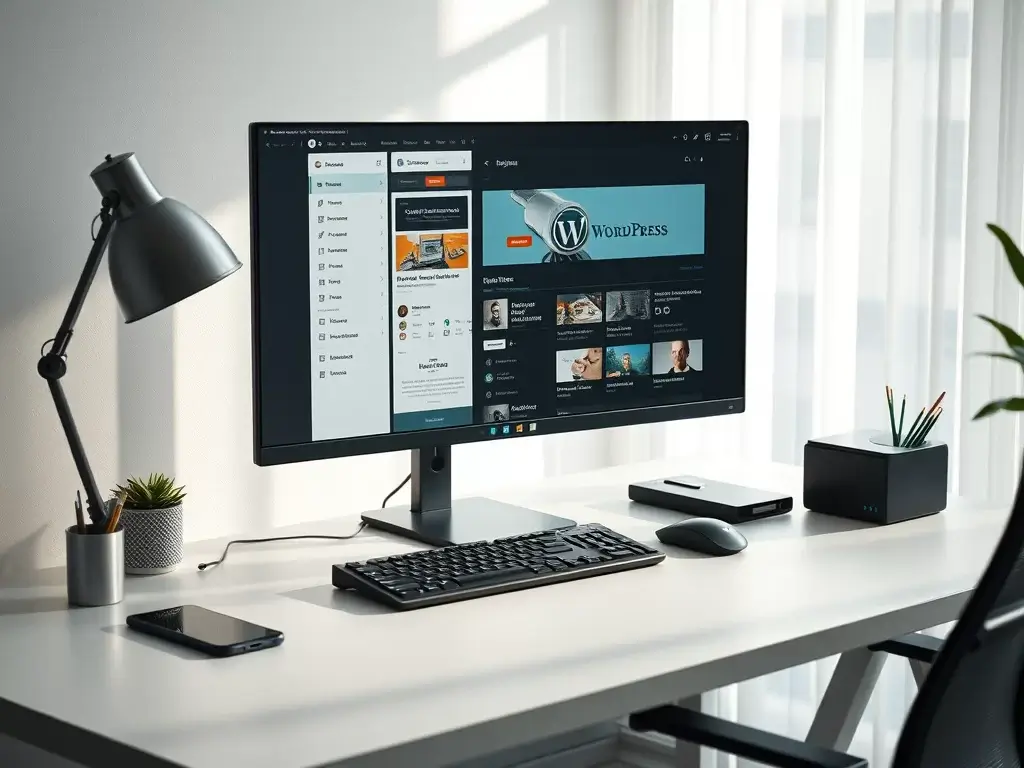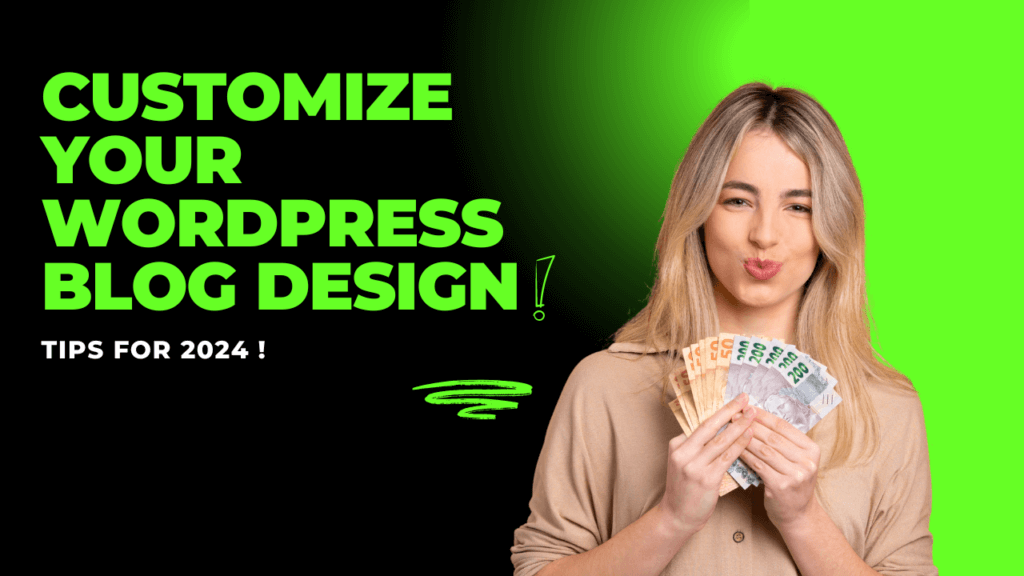When it comes to your website, design isn’t just about making things look pretty—it’s about building an experience that resonates with your audience. Whether you’re a seasoned web designer or a complete beginner, Customize Website Design can feel like a journey into the unknown. But here’s the thing: it doesn’t have to be daunting. In fact, with the right tools and some simple steps, you’ll have a unique and beautifully designed website that reflects your vision and personality.
Why Customize Website Design?
The Importance of First Impressions
Just think of the previous time when you visited a website. Did you stay because it felt welcoming and easy to navigate? Or did you leave because it felt cluttered and uninviting? First impressions matter, and when it comes to Customize Website Design, you only have seconds to capture someone’s attention.
Reflecting Your Brand’s Personality
Your website is not just a collection of pages, it is equal to the expansion of your brand. Whether you’re running a blog, an online store, or a portfolio site, your design needs to reflect who you are and what you stand for. Every color, font, and image choice contributes to telling your story.
Choosing the Right WordPress Theme
Free vs. Premium Themes
When you start designing your WordPress site, the first thing you need to tackle is choosing the right theme. Free themes are a great way to start, but if you’re looking for something more Customize Website Design and feature-rich, a premium theme might be worth the investment.
Responsive and Mobile-Friendly Design
In 2024, having a mobile-friendly design is non-negotiable. Your theme should automatically adjust to different screen sizes, providing a seamless experience for users on all devices.

Customizing WordPress with Page Builders
Elementor: A Drag-and-Drop Revolution
Page builders like Elementor have revolutionized web design. You don’t need to know a single line of code to create stunning pages with its drag-and-drop interface. It’s like designing with building blocks, allowing you to see your changes in real-time.
Beaver Builder: A Clean and Simple Interface
Another popular option is Beaver Builder, which provides a clean and straightforward interface for creating professional-looking Customize Website Design. It’s perfect for beginners who want customization without the learning curve.
Divi: Endless Design Possibilities
If you’re looking for flexibility, Divi might just be the page builder for you. It’s packed with design modules, offering endless possibilities to make your website truly unique.
How to Customize the Header and Footer
Creating a Unique Header to Stand Out
Your Customize Website Design header is the first thing visitors will see, so make it count. From uploading a custom logo to adding a call-to-action button, this space should be all about making a bold first impression.
Customizing Footer for Better Navigation and Branding
While often overlooked, your footer is a prime area for Customize Website Design. Add social media links, a brief brand message, or a newsletter sign-up to make your footer more functional and engaging.
Changing Colors and Fonts in WordPress
The Power of Color in Website Design
Never underestimate the emotional impact of color. A well-chosen color palette can evoke specific feelings and help guide visitors through your content seamlessly. You need to choose the colour of your theme as it shows your brands presense.
How to Choose the Right Typography
Typography goes beyond just picking a font—it’s about making sure your text is readable, professional, and in harmony with your overall design. Tools like Google Fonts make it easy to choose from a wide variety of styles.
Using Custom CSS for Advanced Customization
What is CSS and Why Should You Care?
CSS (Cascading Style Sheets) is the language that gives your Customize Website Design its visual appearance. While WordPress themes offer plenty of customization options, sometimes you’ll want to add a personal touch by diving into CSS.
Simple CSS Tricks for Design Tweaks
Adding CSS might sound intimidating, but small tweaks—like changing button colors or adjusting margins—can make a huge difference in your design.
Adding Custom Widgets to Enhance User Experience
Popular Widgets for Blogs and Websites
Widgets open up a world of possibilities, giving your Customize Website Design added functionality and life. Whether it’s displaying recent posts or integrating your social media feeds, they allow you to enhance your site in so many creative ways.
Customizing Widgets for Unique Features
Want to make your website feel truly yours? Customize your widgets to reflect your brand’s unique style and needs. It’s all about making your website an interactive space for your visitors.
Optimizing Images for Website Design
Image Optimization Plugins for WordPress
Images are a key part of any website, but they can also slow it down if not optimized correctly. Use plugins like Smush or Imagify to compress your images without losing quality.
Balancing Image Quality and Speed
Finding the right balance between image quality and loading speed is crucial. Large, high-resolution images look beautiful, but they can hurt your site’s performance if not properly optimized.
Ensuring Your Website Design is Responsive
Why Responsiveness Matters in 2024
We live in a multi-device world, where users might visit your site on a phone, tablet, or desktop. Ensuring your website is responsive means that your design adapts beautifully, no matter the screen size.
Tools to Test Website Responsiveness
Testing tools like Google’s Mobile-Friendly Test or BrowserStack can help you preview how your website looks across different devices and browsers.
Using Plugins to Extend Design Customization
Best Design Plugins for WordPress Customization
From WPForms to Slider Revolution, there are countless plugins that can help extend the design possibilities of your WordPress site.
Enhancing Your Website’s Functionality Through Plugins
Plugins aren’t just about looks—they can also add functionality. Whether you need an advanced contact form or an eCommerce solution, there’s a plugin for everything.
Customizing the Blog Layout
Grid vs. List: Which Layout is Right for You?
When it comes to displaying your blog posts, you have options. Do you prefer a clean grid layout or a more traditional list style? Only select the one that is suitable for your website.
Adding Featured Images to Posts for Better Engagement
Featured images draw your readers’ attention and give your blog a polished look. Make sure each post includes an eye-catching featured image to increase engagement.
Designing a Custom 404 Error Page
Why a Custom 404 Page Matters
A 404 page doesn’t have to be boring. With a custom design, you can turn an error page into a creative opportunity to keep visitors engaged with fun graphics or helpful navigation.
How to Design an Engaging 404 Page
Create a personalized message, add links to popular content, or include a search bar to make sure users stay on your site, even if they encounter an error.
Testing and Previewing Your Customizations
Importance of Previewing Changes Before Going Live
Before hitting “publish,” always preview your customizations. This helps you catch any mistakes or design issues before your audience sees them.
Tools to Test Your Website on Multiple Devices
Use tools like Responsive Design Checker or Pingdom to preview your site’s performance across different devices and browsers.
Conclusion: Make Your Website Truly Yours
Customizing your WordPress website design is about making your vision come to life. From choosing the right theme to tweaking CSS code, you have endless opportunities to create a site that not only looks great but also offers an exceptional user experience. Don’t be afraid to experiment, and remember—your website should be a reflection of you.
Also visit : Top WordPress Maintenance Tips for 2024
FAQs
1. How can I change the colors on my WordPress site?
You can change colors through the theme customizer or by using custom CSS for more precise control.
2. Do I need coding skills to customize my WordPress site?
No! With page builders like Elementor or Divi, you can design without any coding knowledge.
3. Can I customize my WordPress header and footer?
Absolutely. Most themes allow header and footer customization through the customizer, or you can use plugins.
4. What is the best page builder for WordPress customization?
Elementor, Divi, and Beaver Builder are among the most popular page builders for WordPress.
5. How do I make sure my website is responsive?
Choose a responsive theme and use tools like Google’s Mobile-Friendly Test to ensure your design works on all devices.


